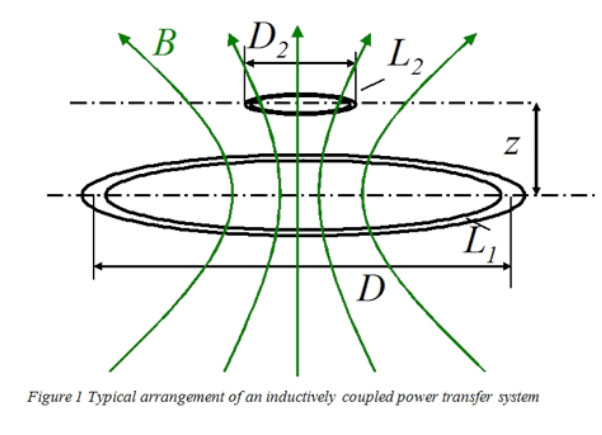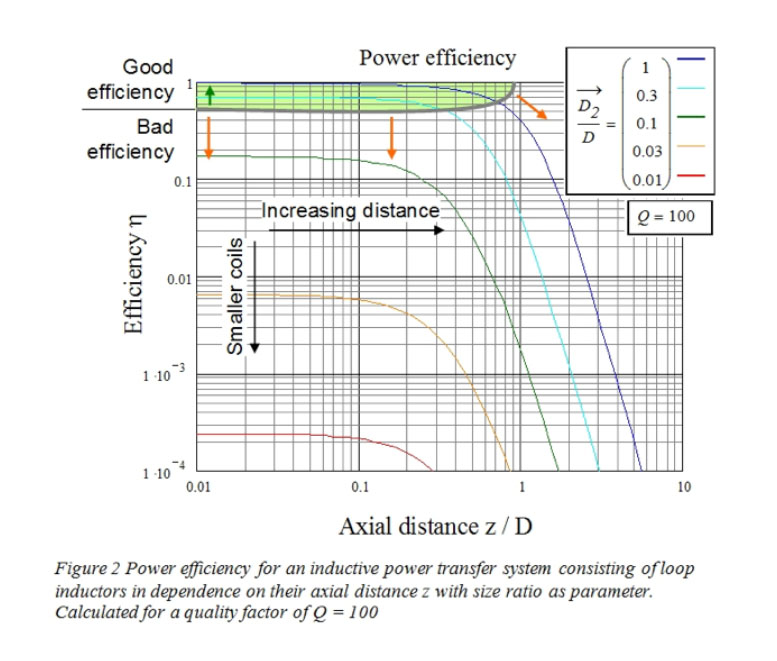Figure 2 shows the calculated optimal efficiency of a system according to Figure 1 with an assumed quality factor of 100. Dimensions for these calculations have been scaled to the larger diameter coil 'D', which can be either the transmitter or receiver.The values are shown as a function of the axial distance of the coils (z/D). The variable is the diameter of the smaller coil D2.The figure shows that
根据图1,假设品质因数为100,对系统最佳效率进行计算,如图2所示。线圈直径D越大,计算量越大,这里的D取发射端与接收端线圈直径中较大的。图表中的值可表示为一个对线圈轴向距离的函数,变量是较小的线圈直径D2。

• The efficiency drops dramatically at larger distance (Z/D > 1) or at a large size difference of the coil (D2/D < 0.3)
• A high efficiency (>90%) can be achieved at close distance (z/D < 0.1) and for coils of similar size (D2/D = 0.5..1)
This shows that inductive power transmission over a large distance, e.g. into a space, is very inefficient. Today, we cannot afford to waste energy for general power applications by using such a system. On the other hand, the figure shows that inductive power transmission is competitive with wired solutions under close proximity settings. Wireless proximity power transmission combines comfort and ease of use with today’s requirements for energy saving.
由图得出以下结论:
•当轴间距离较大(Z/ D> 1)或线圈的尺寸差较大(D 2/ D<0.3)时,传输效率急剧下降;
•当轴间距离较小(Z/ D<0.1)且线圈尺寸类似(D2/ D =0.5..1)时,可得到较高的传输效率(> 90%);
研究表明,在一个较长的距离进行电磁感应功率传输时,如在某空间范围内,传输效率是极低的。目前,我们无法接受浪费如此多的能量进行低效率能量转化。
另一方面,只要在近距离的情况下,电磁感应能量传输是对于有线传输方案是具备竞争力的。无线感应能量传输具备的便捷性和易用性很适合当今提倡节能减排的要求。
